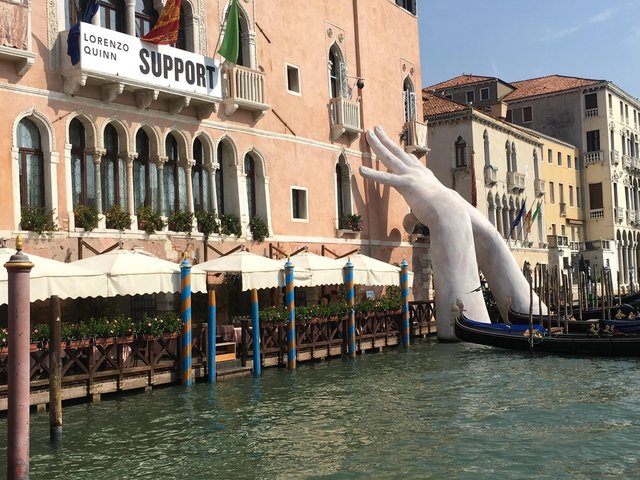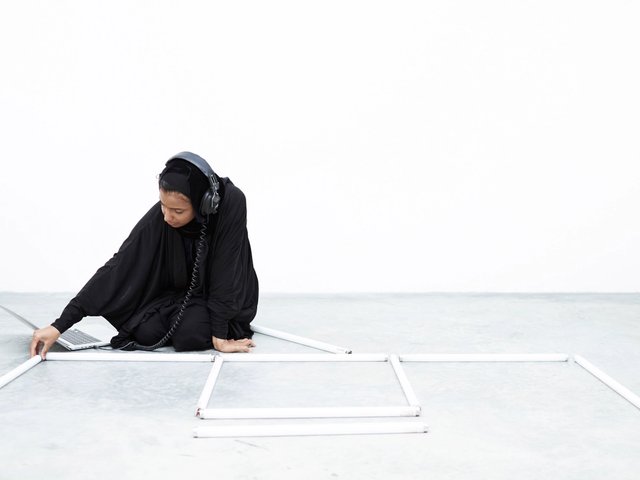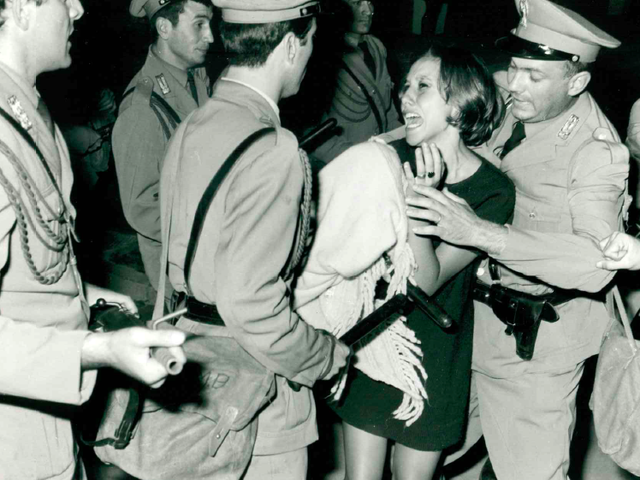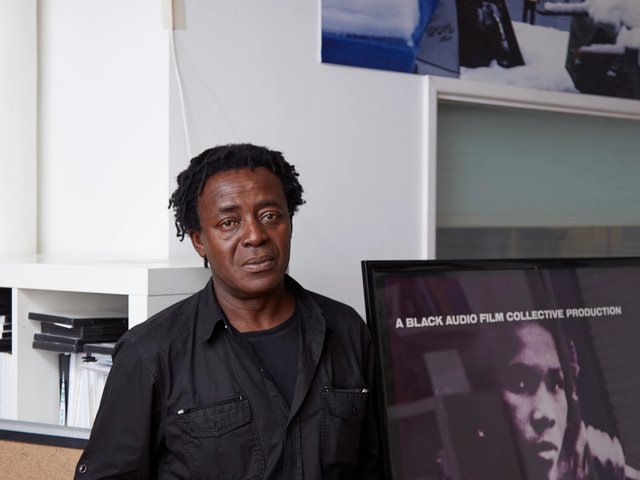The world’s largest and most prestigious exhibition—the 60th Venice Biennale (Stranieri Ovunque - Foreigners Everywhere)—finishes on 24 November. The Biennale curator, Adriano Pedrosa, will unveil a special performance programme during the closing week (18-24 November), featuring eight participating artists including Isaac Chong Wai, Joshua Serafin, La Chola Poblete, and Puppies Puppies (Jade Guanaro Kuriki-Olivo). But, before the Biennale comes to an end, we highlight some talking-point exhibitions and events.
Nigeria Imaginary, Palazzo Canal, Until 24 November
Long queues have often formed at the Nigerian pavilion this year. Works on show are by artists such as Yinka Shonibare, Precious Okoyomon and Ndidi Dike, whose Blackhood: A Living Archive comprises 736 black wooden batons in a monolithic installation, commemorating those lost in the EndSARS movement against police brutality. “It was profoundly moving to witness such a wide audience captivated, not just by the art itself but by a deep curiosity to learn more about Nigerian history, culture, and contemporary narratives. The exhibition has served as a powerful catalyst, sparking new ways of thinking about Nigeria, its history and its artists,” the curator of the pavilion, Aindrea Emelife, tells The Art Newspaper.
At the pavilion’s launch, Tate director Maria Balshaw shared similarly positive thoughts.“My highpoint was the Nigerian pavilion. Curated by Emelife, and with a brilliant set of artists, it is leading the debate that the art world and the museum sector needs to have,” she said.
An expanded version of the show is due to launch next year at the Museum of West African Art in Benin City, Nigeria.
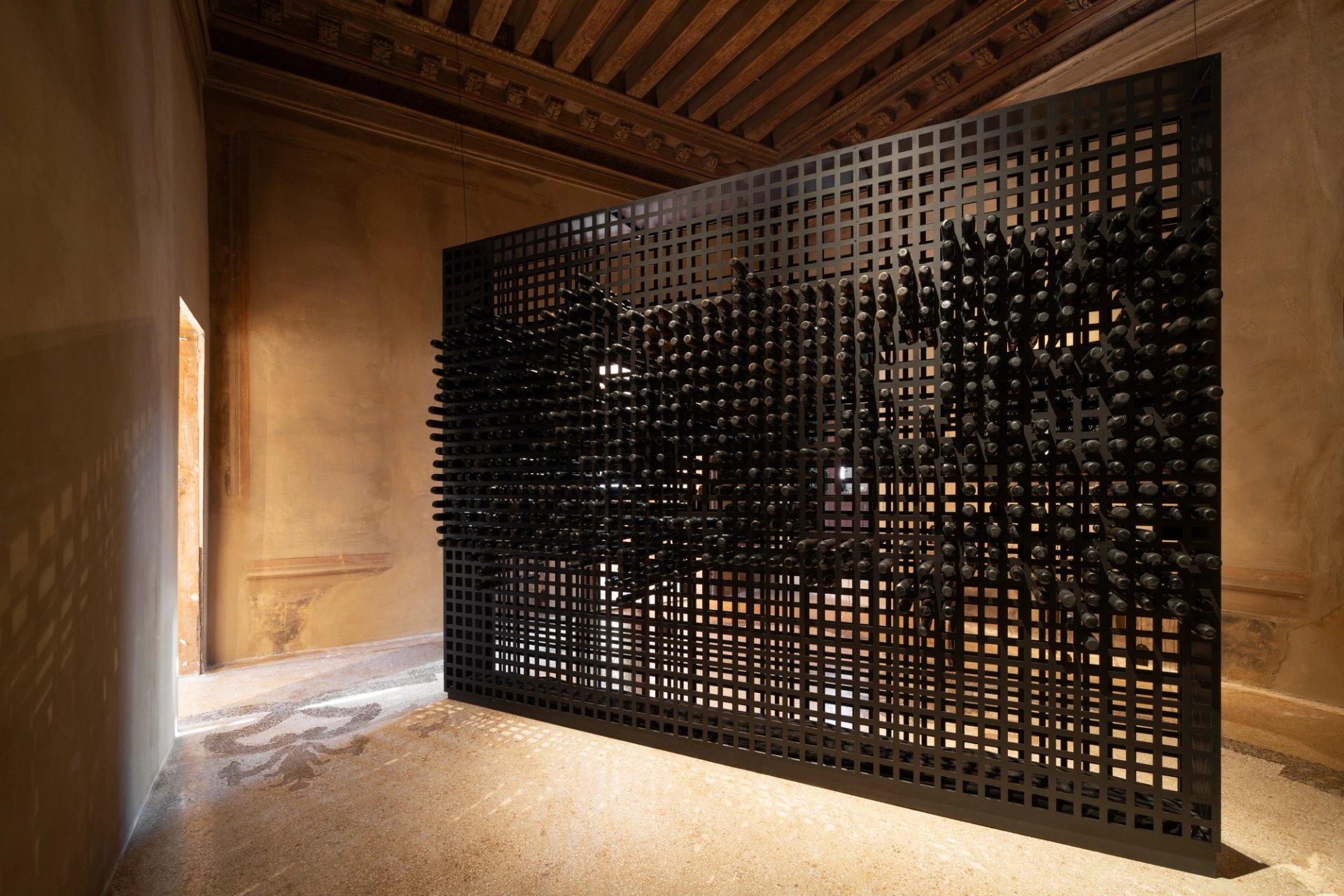
Ndidi Dike, Blackhood A Living Archive, 2024
Venice Biennale, National Pavilions—Egypt, Australia and United States, until 24 November
Stand-out national pavilions include Egypt, one of the most inventive and unusual offerings at this year’s Venice Biennale, courtesy of the artist Wael Shawky. Visitors were moved by this musical, filmed in a historic theatre in Alexandria, that melds revolutionary moments in history with a series of sweet, surreal melodies—plus Sobhy the donkey.
At the Australia pavilion, the Golden Lion winner Archie Moore created an “intensely moving” genealogical chart—in white chalk on black walls—tracing his Kamilaroi, Bigambul and British ancestry going back 65,000 years. Meanwhile Jeffrey Gibson, the first Indigenous artist to have a solo show in the US pavilion, blends Native American traditions with text, textiles and themes of identity and globalism, creating a riotously colourful and joyful art oasis.
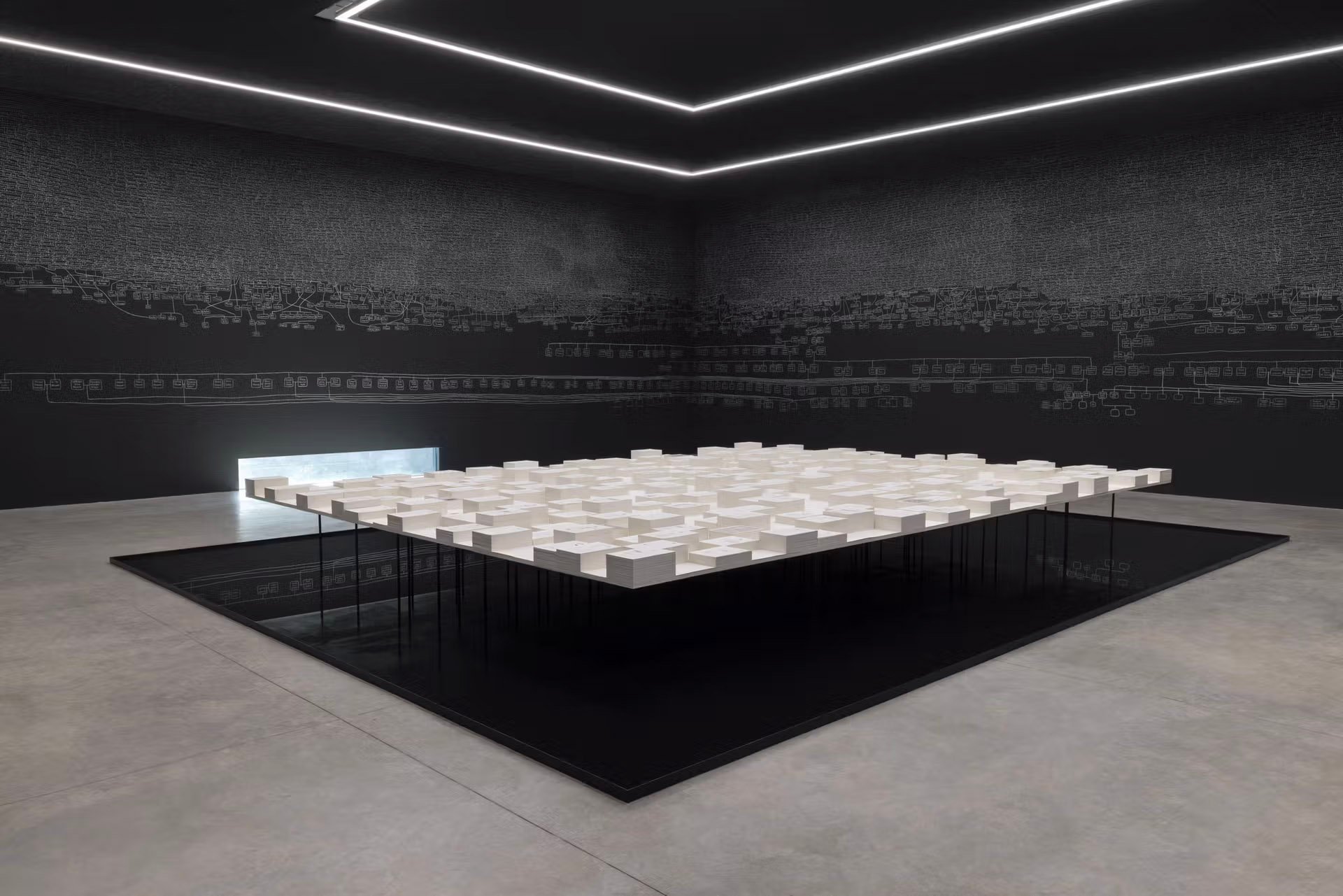
Installation view of Archie Moore, kith and kin(2024), Australia Pavilion at Venice Biennale 2024
Photo: Andrea Rossetti; © the artist; image courtesy of the artist and The Commercial
Venice Biennale, Arsenale—Foreigners Everywhere, until 24 November
The main exhibition at the Arsenale site always polarises opinion, but curator Adriano Pedrosa’s concept for the international exhibition—tackling migration, decolonisation and queer theory—appears to chime with the times. In his review for The Art Newspaper, Ben Luke said: “Foreigners Everywhere is a show of polarities: the intimacy and tenderness of community, family, love and sex; the violence of colonial histories, extraction, migration policies in rich nations, homophobia and racism, and war. This is the vital tension at the heart of a deeply stimulating Biennale.”
Visitors singled out works such as a fabric piece by the Palestinian-Saudi artist Dana Awartani (Come, let me heal your wounds. Let me mend your broken bones, 2024) and the poignant installation The Mapping Journey Project (2008–11) by Bouchra Khalili, which shows migrants marking the journey from their homeland to their current place of residence.
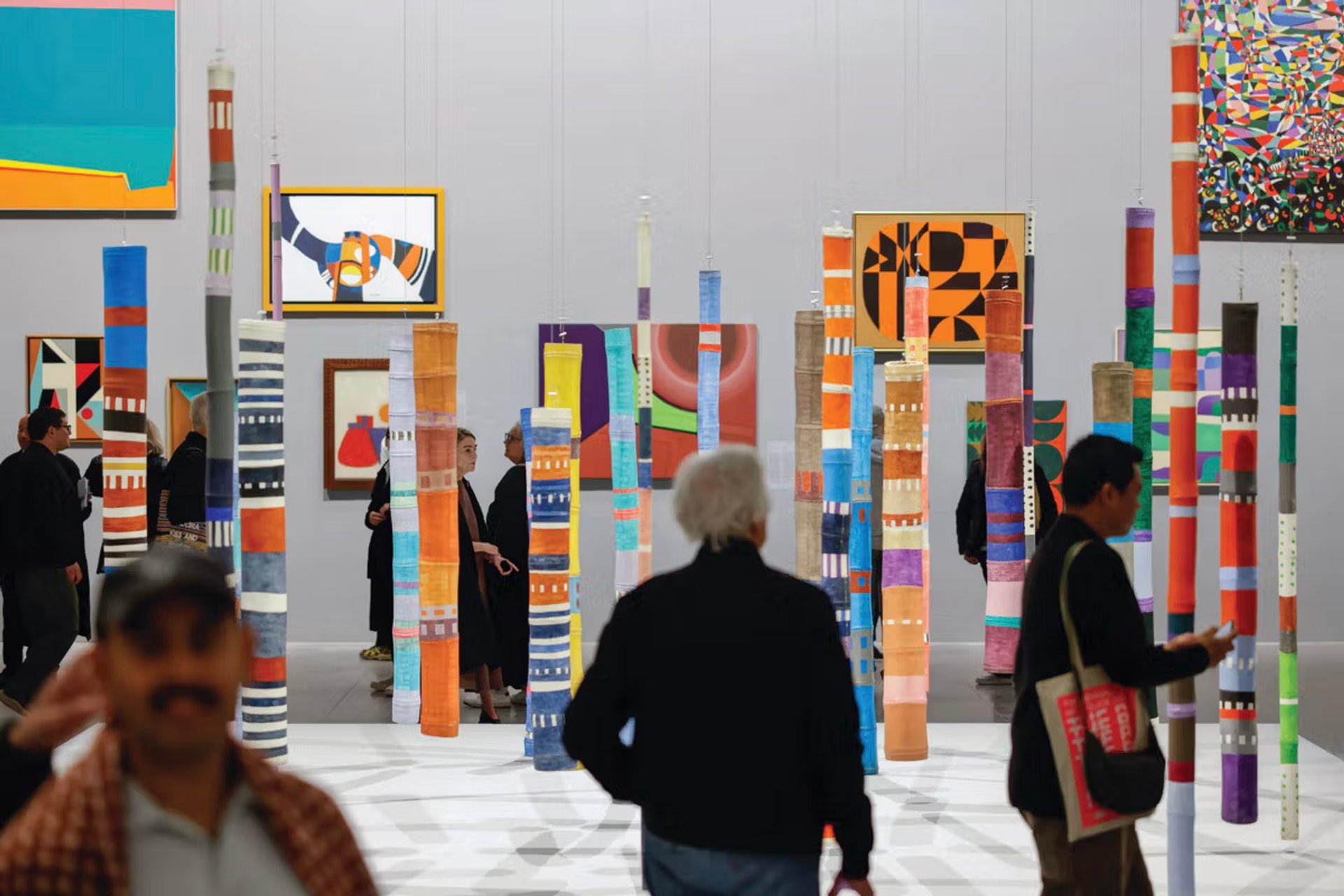
An installation view of Foreigners Everywhere
Photo: © Jacopo Salvi
Pierre Huyghe—Liminal, Punta della Dogana, until 24 November
French artist Pierre Huyghe’s deep dive into the possibilities and limitations of artificial intelligence (AI) and machine sentience at the Punta della Dogana quickly became a talking point in Venice. His complex, multi-layered show, Liminal, tells “a story of evolving technologies: earlier works include aquariums, live marine ecosystems and film, while more recent pieces are made of ‘robotics driven by machine learning’ with voices and edits generated by AI”, wrote Alina Cohen.
The critic Jackie Wullschläger was also convinced, writing in the Financial Times: “With its low galleries lapped by water, the Dogana has always felt like a fish tank, and Huyghe’s aquariums here are seductive and apt… we shuffle around, curious, bewildered, bumping into each other, staring collectively into the void.” One of the most watchable works is Camata (2024), a new film in which robotic camera apparatus surveys the bones of a human skeleton in a desert landscape.

Pierre Huyghe, Liminal, 2024 - ongoing Courtesy the artist and Galerie Chantal Crousel, Marian Goodman Gallery, Hauser & Wirth, Esther Schipper, and TARO NASU
© Pierre Huyghe
Peter Hujar: Portraits in Life and Death, Chiesa di Santa Maria della Pietá, Riva degli Schiavoni, until 24 November
The late US photographer Peter Hujar is having a moment, both commercially and critically. This small but significant Venice show cements his burgeoning reputation as an honest and clever chronicler of “intellectuals, luminaries, and members of New York City subculture in moments of disarmed vulnerability”, says a statement from Pace gallery which organised the show. The exhibition brings together two bodies of his work—the larger one, taken from his book Life and Death, includes intimately captured portraits of his close friends, including the film director John Waters and a striking depiction of the US author Fran Lebowitz. Another highlight is the anterior room of eight works from his Catacombs series, taken during a 1963 trip to Palermo, showing corpses in a crypt dressed in finery for their families to visit.
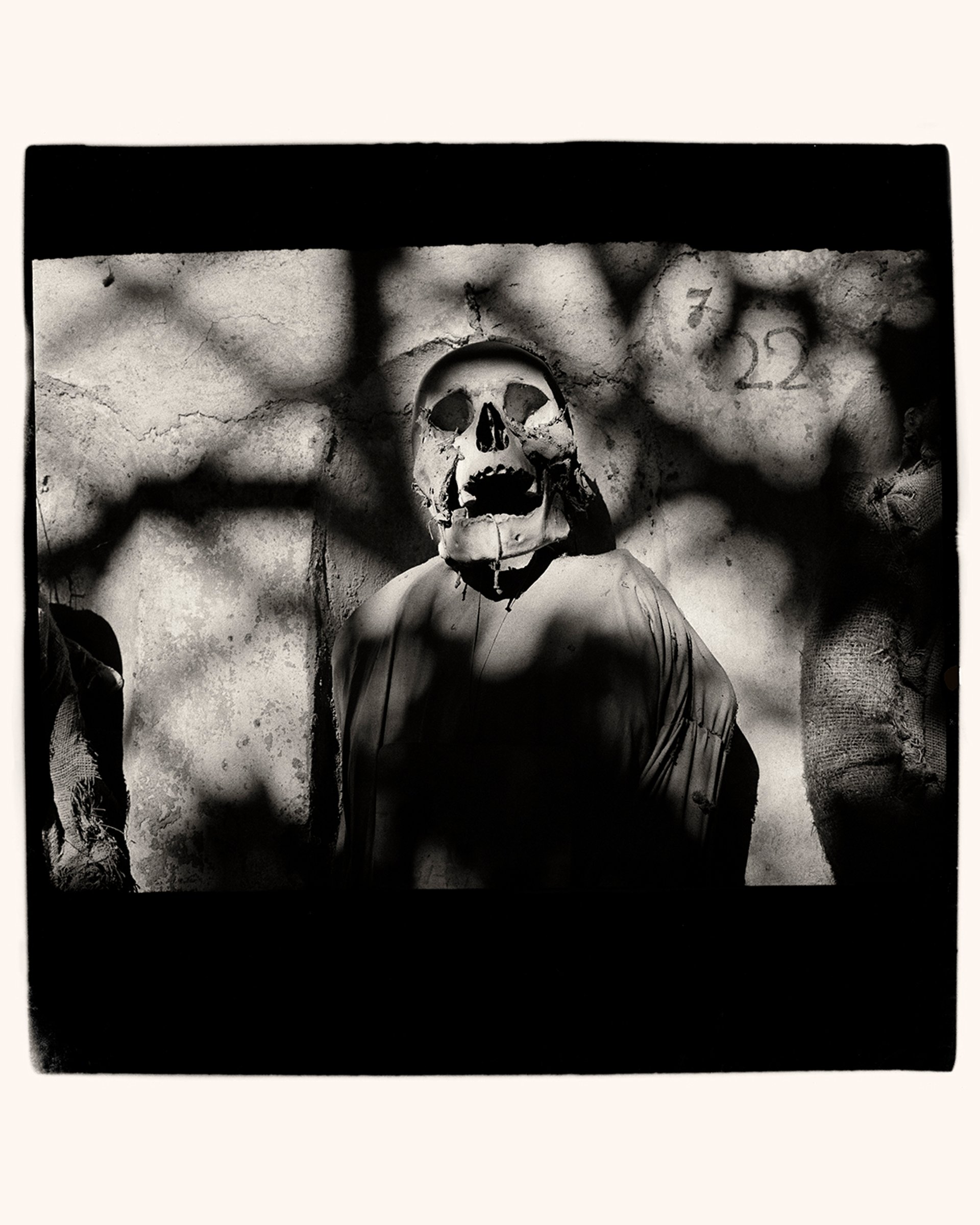
Palermo Catacomb #1, 1963, EPH0150 Portraits in Life and Death
Peter Hujar
Best of the rest
Christoph Büchel, Monte di Pietà, Fondazione Prada, until 24 November
The Swiss-Icelandic artist and provocateur Christoph Büchel courts controversy once more with a show at the Fondazione Prada focused on debt and its impact on society and individuals. Note that wading through the fake luxury handbags, surveillance cameras, uneaten food, guns, selfie sticks and broken freezers requires a degree of stamina.
Nebula, Complesso dell’Ospedaletto, until 24 November
This group show of video installations, comprising eight new site-specific works, winds and weaves around the inspiring architecture of the Complesso dell'Ospedaletto, moving from the church of Santa Maria dei Derelitti to the wing of a former care home. Look out for Giorgio Andreotta Calò’s work, also called Nebula (2024), which follows a sheep around the aforementioned church.



